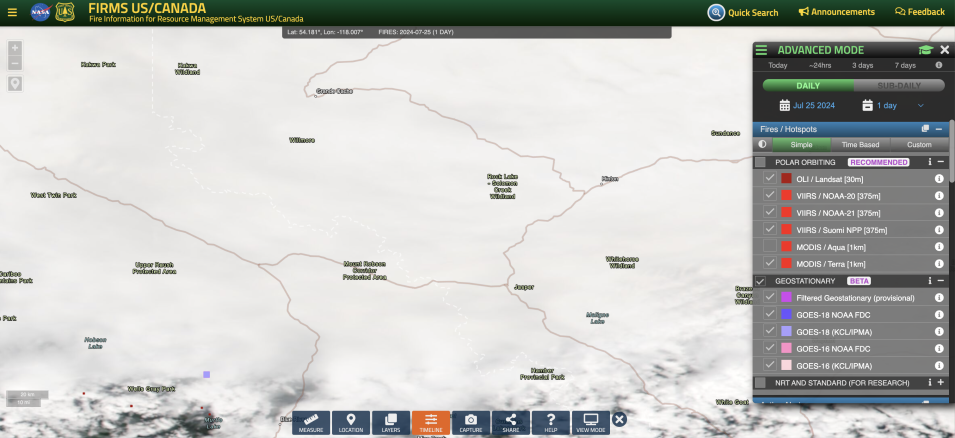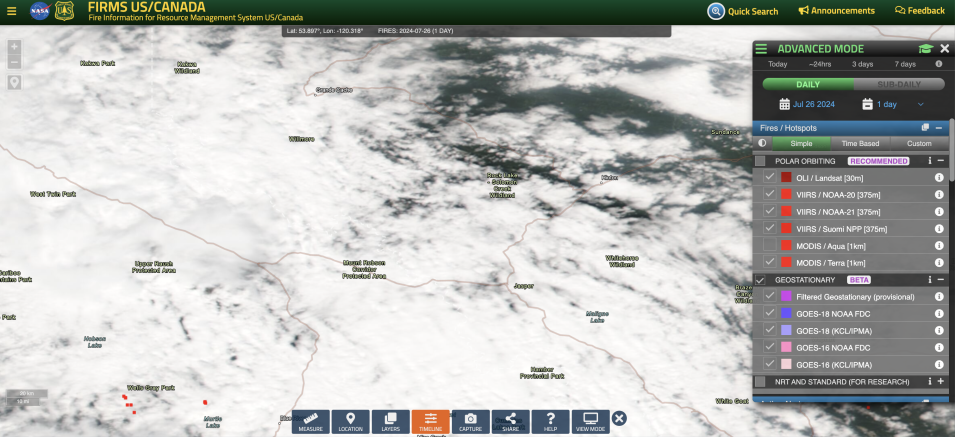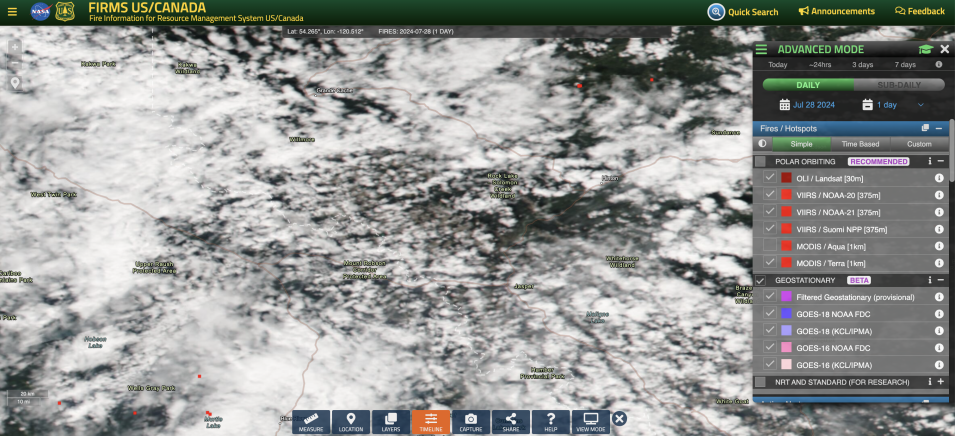A recent wildfire in Jasper, Alberta, Canada, which began on July 24, 2024, highlighted the impact of cloud cover on active fire detections. As of August 6, the wildfire had consumed 34,000 hectares (about 84,016 acres) of Jasper, including much of the downtown area.
While some limited detected fire activity was captured by the Moderate Resolution Imaging Spectroradiometer (MODIS) and Visible Infrared Imaging Radiometer Suite (VIIRS) instruments to the south/southeast of Jasper in the daytime observations on July 24, no additional detections were captured for several consecutive days following these initial detections.
NASA's Fire Information for Resource Management System (FIRMS) received multiple questions from users about the wildfire in Jasper, and this blog explains the reasons for the limited active fire detections during this period.
FIRMS provides active fire detections from both polar orbiting satellites and geostationary satellites. The polar orbiting satellites each typically collect two observations per day over Jasper—once during the day and again about 12 hours later during the night.
On July 24 there was some limited fire activity detected by MODIS and VIIRS further south/southeast of Jasper that was captured on the daytime observations. However, if FIRMS US/Canada users view the MODIS and VIIRS imagery that were acquired on July 24 (the imagery can be loaded by selecting the VIIRS and MODIS Corrected Reflectance imagery within the Dynamic Imagery dropdown), they will notice that the Jasper area was under heavy cloud cover.
Unfortunately, the satellite sensors cannot discern fire activity under heavy clouds or smoke cover and, therefore, under these conditions there will be limited active fire detection. Thick clouds persisted for several days and continued to impact the active fire detections.
The images below were acquired on July 25, July 26, and July 28, and show thick cloud over the Jasper area:


